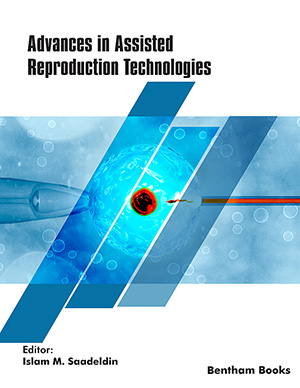Abstract
Background: Snake venom has become a key source of many bioactive peptides, enzymes, and toxins associated with blood coagulation and neuronal toxicity. In the past, a number of bradykinin potentiating peptides have been isolated from snake venom that display hypotensive activity due to their inhibitory action towards Angiotensin-Converting Enzyme (ACE). Significant interest has developed to isolate, characterize, and subsequently design peptide analogs as potent ACE-inhibitors which may find therapeutic applications for the treatment of hypertension and associated diseases.
Aim: The aim of this study is to search for new bioactive peptide/s in the venom of the snake Bothrops Jararaca (Bj).
Objective: The objective is to isolate and characterize new hypotensive peptides from BJ venom.
Methods: We examined the venom of Bj which is known to host a range of bioactive peptides. We have isolated a new peptide (BJ-1) which displayed in vitro potent hypotensive activity. The peptide was purified via Sephadex G25 column chromatography and RP-HPLC. It was characterized by mass spectrometry, amino acid analysis, N-terminal sequencing, and chemical synthesis.
Result: The peptide was identified as an octa-decapeptide with amino acid sequence as DCPSDWSSYEGHCYKPFS where the two Cys residues are likely present in free state, although they can form an internal S-S bond upon oxidation. It was fully confirmed by comparing with synthetic peptide prepared by solid phase chemistry. Both have the same molecular mass (2,108 Da) and identical bioactivity. Furthermore, we rationalize that BJ-1 may be derived from precursor protein “Coagulation factor IX/factor X binding protein (CF-IX/X-BP)” by proteolytic cleavage at the Nterminus of its B-chain within the sequence KPFS18↓E19PKN. This cleavage site contains the recognition motif of enzyme PCSK8 (Proprotein Convertase Subtilisin Kexin8) also known as Subtilisin Kexin Isozyme 1 (SKI-1) or Site 1 Protease (S1P). Despite this observation, using a synthetic peptide encompassing the proposed cleavage site and recombinant PCSK8 enzyme, we found that the enzyme responsible for generation of BJ-1 is not PCSK8. Further studies will be needed to identify the associated enzyme and fully characterize the pharmacological and biological properties of the peptide.
Conclusion: Our study revealed the presence of a novel hypotensive octa-decapeptide in the venom of the snake Bothrops jararaca. It is likely derived from the A-chain of protein CF-IX/X-BP via proteolytic cleavage at the N-terminus by a protease yet to be characterized.
Keywords: Snake venom, Bothrops jararaca, peptide isolation, peptide characterization, mass spectrum, amino acid sequencing, reverse phase performance layer chromatography, hypotension, bradykinin.
[http://dx.doi.org/10.1590/1678-4324-2022210421]
[http://dx.doi.org/10.1016/j.jprot.2016.06.029] [PMID: 27373870]
[http://dx.doi.org/10.1007/978-1-4939-7537-2_23] [PMID: 29476523]
[http://dx.doi.org/10.3389/fmolb.2022.924023] [PMID: 35647027]
[http://dx.doi.org/10.1021/bi00815a005] [PMID: 4317874]
[http://dx.doi.org/10.1038/nrd1197] [PMID: 14526382]
[http://dx.doi.org/10.1038/s41570-022-00393-7]
[http://dx.doi.org/10.1073/pnas.94.4.1189] [PMID: 9037028]
[http://dx.doi.org/10.1371/journal.pntd.0009044] [PMID: 33513145]
[http://dx.doi.org/10.1111/j.1476-5381.1989.tb16889.x] [PMID: 2804549]
[http://dx.doi.org/10.1016/0305-0491(95)02072-1] [PMID: 8829801]
[PMID: 16740989]
[http://dx.doi.org/10.1016/j.cbpa.2006.09.002] [PMID: 17046304]
[http://dx.doi.org/10.1016/j.toxicon.2005.02.017] [PMID: 15922781]
[PMID: 28578650]
[http://dx.doi.org/10.1016/B978-0-12-385095-9.00062-2]
[http://dx.doi.org/10.2174/1568026615666150217113835] [PMID: 25686732]
[http://dx.doi.org/10.1186/s43094-022-00415-7]
[http://dx.doi.org/10.1186/s12866-020-01921-5] [PMID: 32746783]
[http://dx.doi.org/10.1172/jci.insight.142299]
[http://dx.doi.org/10.1002/ddr.21732] [PMID: 32761647]
[http://dx.doi.org/10.5772/52872]
[http://dx.doi.org/10.1186/s40409-017-0134-7] [PMID: 29090005]
[http://dx.doi.org/10.1073/pnas.96.4.1321] [PMID: 9990022]
[http://dx.doi.org/10.1074/jbc.275.4.2349] [PMID: 10644685]
[http://dx.doi.org/10.1007/978-1-4939-9845-6_3] [PMID: 31576522]
[http://dx.doi.org/10.1146/annurev.pa.08.040168.001503] [PMID: 4875394]
[http://dx.doi.org/10.1016/S0014-5793(02)02394-3] [PMID: 11943176]
[http://dx.doi.org/10.1016/j.febslet.2005.07.062] [PMID: 16102752]
[http://dx.doi.org/10.1038/sj.onc.1208838] [PMID: 16007151]
[http://dx.doi.org/10.1016/j.ejmech.2015.01.022] [PMID: 25679794]
[http://dx.doi.org/10.1074/jbc.M208009200] [PMID: 12414802]
[http://dx.doi.org/10.1172/JCI200317220] [PMID: 12782675]
[http://dx.doi.org/10.1016/j.bbrc.2004.11.063] [PMID: 15596135]
[http://dx.doi.org/10.1074/jbc.M008104200] [PMID: 11152678]
[http://dx.doi.org/10.1074/jbc.M109011200] [PMID: 11756446]
[http://dx.doi.org/10.1074/jbc.M513675200] [PMID: 16790437]
[http://dx.doi.org/10.1002/jat.3948] [PMID: 32052484]
[http://dx.doi.org/10.1111/j.1399-3011.1995.tb01043.x] [PMID: 7601603]
[PMID: 22629093]
[http://dx.doi.org/10.1016/j.sbi.2019.04.001] [PMID: 31078334]
[http://dx.doi.org/10.1002/pro.4153] [PMID: 34216059]
[http://dx.doi.org/10.1093/nar/gkh371]
[http://dx.doi.org/10.1016/j.freeradbiomed.2014.09.016] [PMID: 25261734]
[http://dx.doi.org/10.1007/s13361-011-0222-9] [PMID: 21952765]
[http://dx.doi.org/10.1021/tx300096a] [PMID: 22591159]
[http://dx.doi.org/10.3891/acta.chem.scand.04-0283]
[http://dx.doi.org/10.1007/978-1-59259-642-3_41]
[http://dx.doi.org/10.1006/jmbi.1999.2756] [PMID: 10339409]
[http://dx.doi.org/10.3390/molecules24152778]
[http://dx.doi.org/10.1002/psc.2965] [PMID: 28054409]
[http://dx.doi.org/10.1152/japplphysiol.00584.2002] [PMID: 12679362]
[http://dx.doi.org/10.1016/S0196-9781(99)00031-5] [PMID: 10458520]
[http://dx.doi.org/10.1021/bi00078a012] [PMID: 8334120]
[http://dx.doi.org/10.1093/oxfordjournals.jbchem.a122935] [PMID: 2613688]
[http://dx.doi.org/10.1016/j.phrs.2020.105327] [PMID: 33276098]
[http://dx.doi.org/10.1016/S0009-9120(86)80002-9] [PMID: 3555886]
[http://dx.doi.org/10.1002/bab.2309] [PMID: 35019178]
[http://dx.doi.org/10.3390/ijms21249739] [PMID: 33419373]
[http://dx.doi.org/10.3389/fphar.2022.988561] [PMID: 36188622]
[http://dx.doi.org/10.1016/0041-0101(92)90383-G] [PMID: 1523677]
[http://dx.doi.org/10.1016/j.taap.2018.08.018] [PMID: 30145175]
[http://dx.doi.org/10.1016/j.toxicon.2021.04.016] [PMID: 33940046]
[http://dx.doi.org/10.3390/toxins12060358] [PMID: 32485989]
[http://dx.doi.org/10.1371/journal.pntd.0002814] [PMID: 24831016]



























